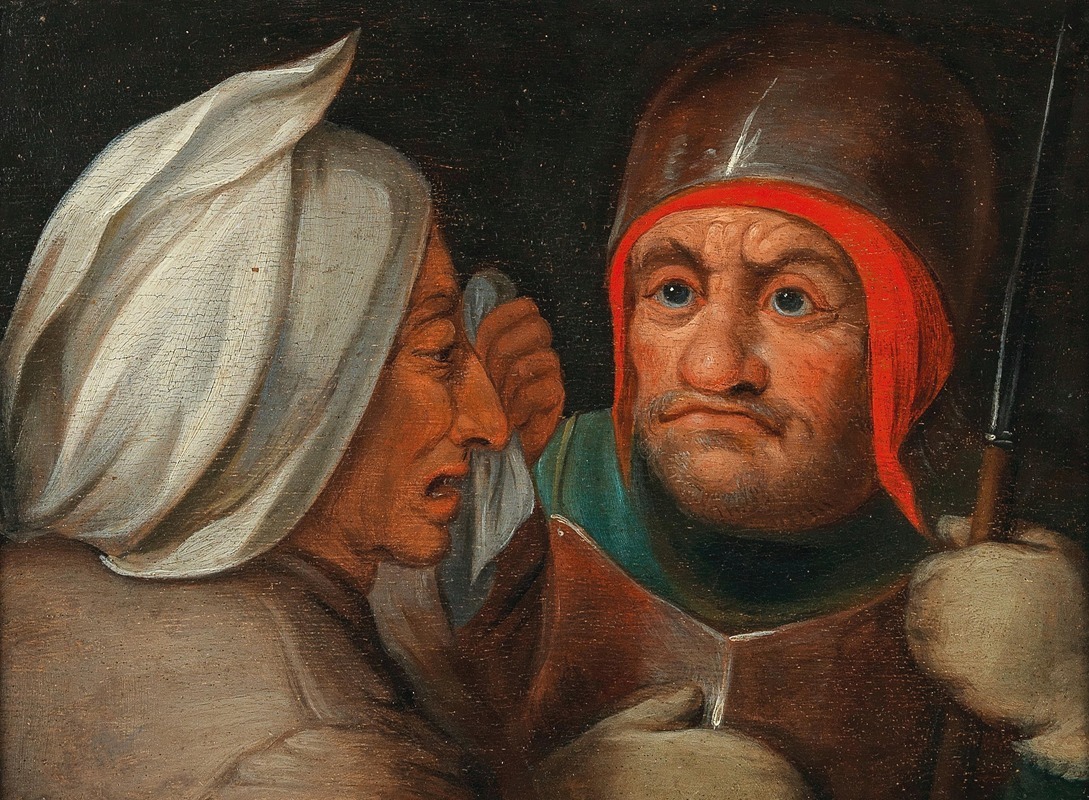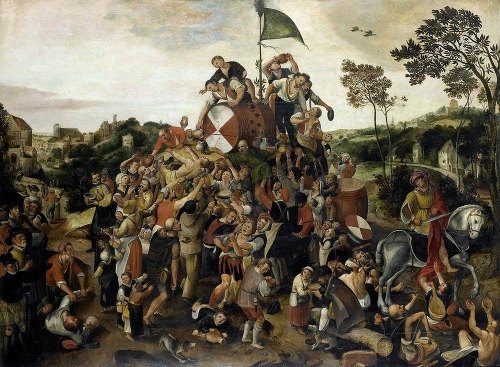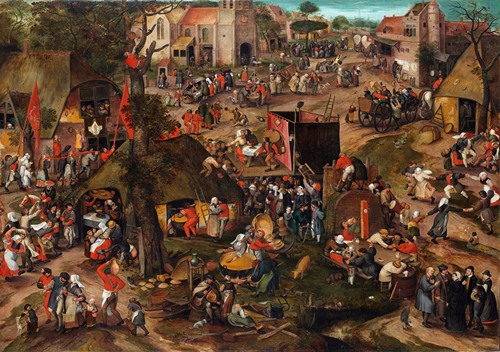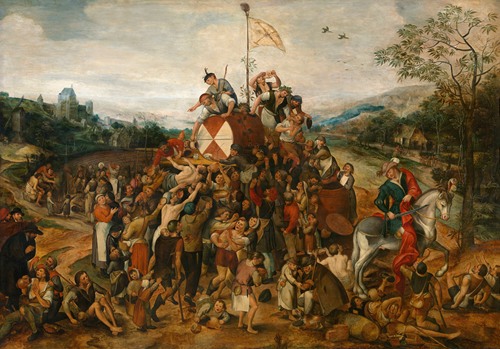
Peeter Baltens, Pieter Balten or Pieter Custodis, was a Flemish Renaissance painter, draughtsman, engraver and publisher. Baltens was also active as an art dealer and poet. He was known for his genre paintings, religious compositions and landscapes.
His career and artistic development and that of the Flemish painter Pieter Bruegel the Elder were closely intertwined. He is credited as being one of the key inventors of the genre of the village scene in Flemish and Dutch art.
Details on the life of Pieter Baltens are scarce. Baltens was born in Antwerp c. 1527 as the son of the sculptor Baltens Custodis (or Baltens Janszoon de Costere). He was registered as a member of the local Guild of Saint Luke in 1540 under the name 'Pierken Custodis'. He was admitted as a master of the Guild in 1550.
The early 17th-century Flemish art historian Karel van Mander is the key source on the life of Baltens. Van Mander stated in his 1604 Schilder-boeck that Baltens became a member of the Guild of St. Luke in 1579. It is now known from other sources that van Mander had this date wrong. Van Mander's error is possibly due to a misreading of the date 1569, the date on which Baltens became a member of the governing board of the Guild. Another erroneous statement by van Mander, which had a devastating impact on Baltens' art historical reputation, was to call Baltens a follower of Pieter Bruegel the Elder. Van Mander was in fact wrong on the date on which Baltens joined the local Guild as well as on Baltens' relationship with Pieter Bruegel the Elder which he qualified as that of a follower.
In 1550-1551 Bruegel in fact worked as an assistant of Peeter Baltens. The two artists are known to have collaborated on an altarpiece (now lost) for the Glovemakers' Guild in Mechelen. In this commission it was Baltens who painted the central part of the altarpiece and Bruegel the wings in grisaille. This division of tasks suggests that Baltens was the more established figure in the collaboration.
Van Mander further claimed that Baltens visited different countries and made various views from life even though there is no record of such travels. Van Mander wrote that Baltens was a good poet and rederijker and collaborated from time to time with the painter Cornelis Ketel. Peeter Baltens was a member of the Chamber of rhetoric called Violieren.
Baltens' son Dominicus moved to Germany where he married the widow of Bartholomäus Kilian. He set up an engraving workshop in Augsburg, which was known as the Kilian family of engravers.
More Artworks by Peeter Baltens




